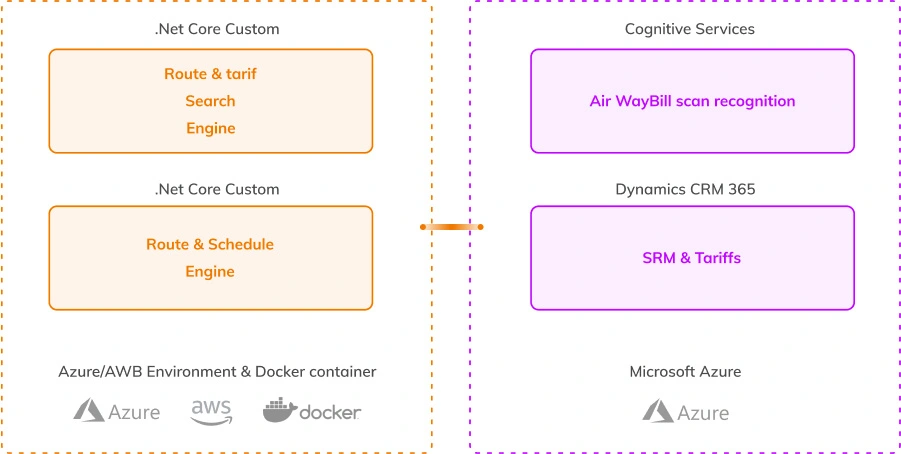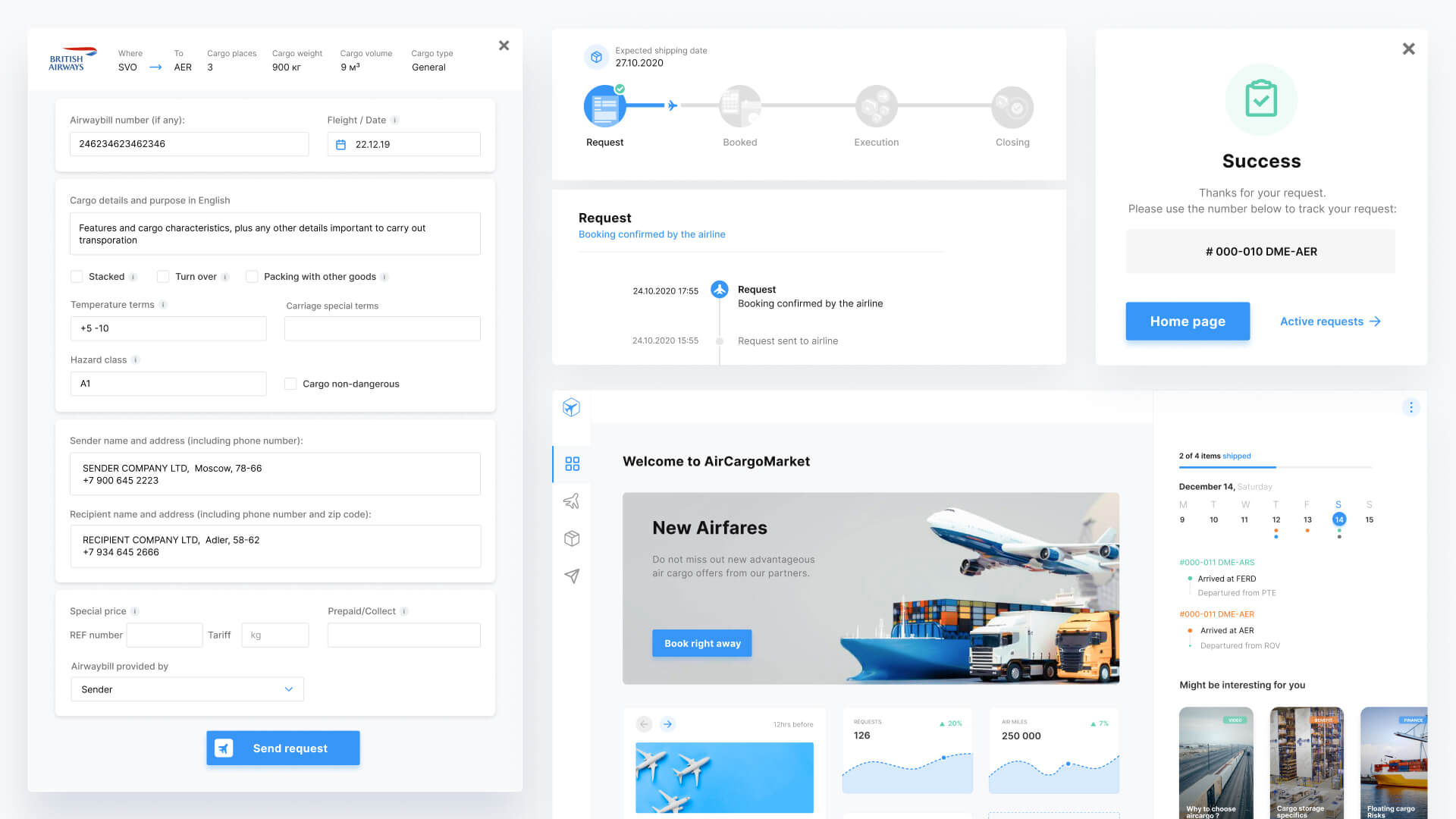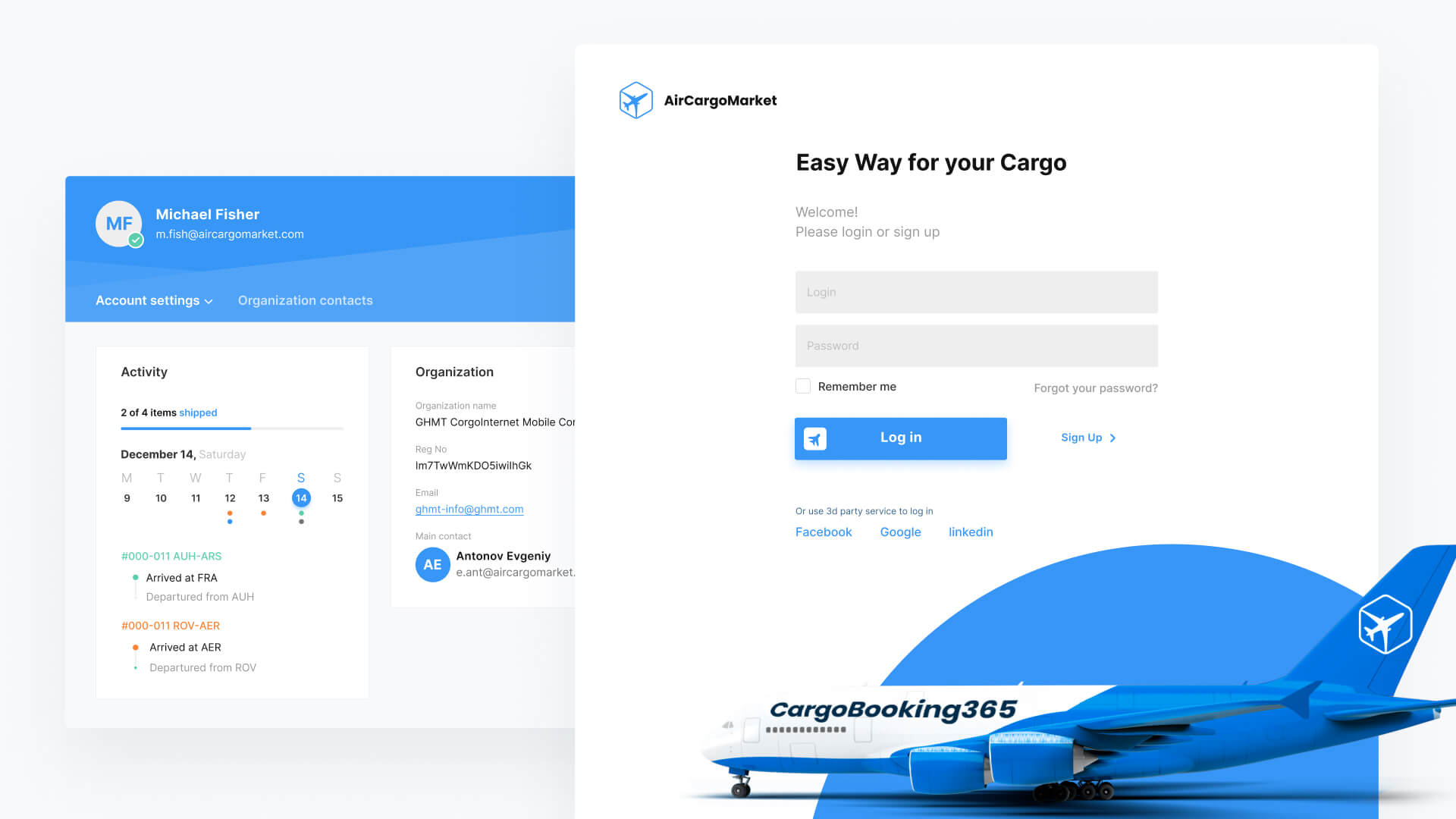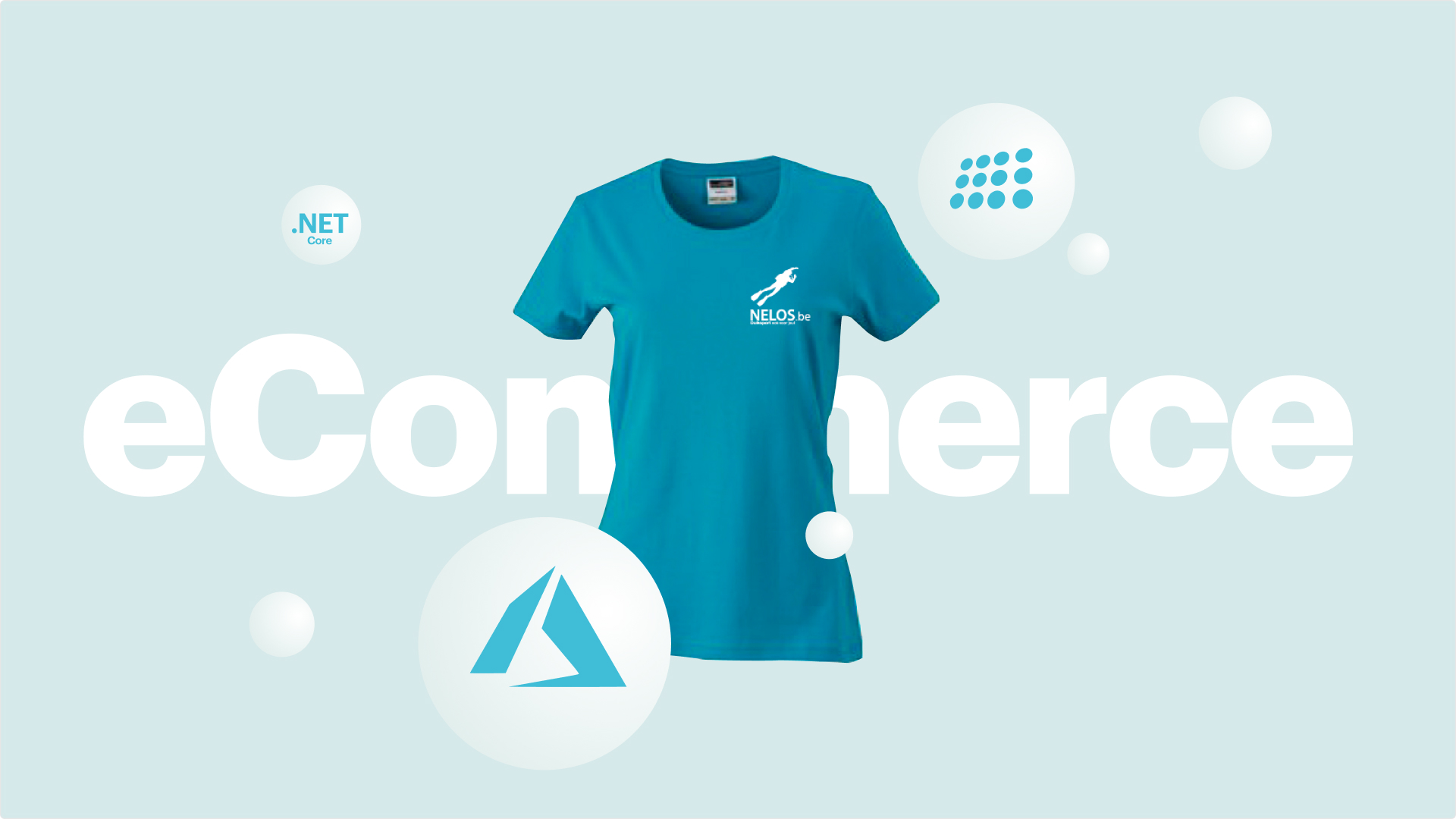Challenges
Background
- Quick rise of digitalization in the global economy and in the cargo industry in particular.
- Carriers and cargo companies who can seize new opportunities and implied technologies will get ahead of competitors.
- Cargobooking365 spin-off has been launched as a response to modern industry’s challenges and aims to capture a share in a new niche of air cargo e-booking.
Air cargo industry challenges:
- In comparison to passengers e-booking, cargo booking is much more sophisticated.
- Pricing depends on numerous factors such as route, airport terminal (in both points), cargo type, its transportation and storage characteristics, aircraft and its compartment dimensions, etc.
- Lack of modern and widely accepted electronic industry standards – interaction and data exchange are based on outdated CargoImp standard while the newer one CargoXML is still poorly used.
- As a result, clients and airlines are used to manual calculations, this leads to significant delays and losses.
Analysis
Objectives
Foremost goals:
- Ensure company’s leading position and market share in e-booking solutions for the air cargo industry.
- Digitalize interaction with existing customers to streamline communication and booking processes.
- Use an open SaaS-platform to attract new partners – both end customers of cargo services and airlines and their agents providing transportation services.
Tasks
Tasks to fulfill the goals:
- Develop a platform that would bring together client companies, agents and airlines within the process of finding and selecting flights for air cargo transportation.
- Develop a system for calculating the cost of transportation:
- The algorithm should take into account many parameters – a flight route, cargo type and parameters, conditions of receiving and storing cargo in the dispatch and receipt terminals, board and compartments parameters of the aircraft operating the flight.
- The calculation system should be implemented as a separate microservice capable of returning the calculation result to various clients who needs this data.
- Implement a module for storing and selecting flight schedules.
- Automate business processes of flight selection and booking.
- Minimize phone and email communication between the parties – client, agent and carrier – thus speed up the process of selecting and booking flights.
- Implement an Air Waybills recognition module to reduce processing and generation time of major flight documents.
- Integrate the system with the local ERP system (Dynamics CRM 365) to synchronize customer data, search queries and ongoing booking requests.
Development
SaaS-platform architecture
The main feature of the system is that it uses SaaS model. This determines the choice of the solution tech stack. The system can be launched in the most suitable environment depending on the business goals – be it cloud solutions from Microsoft Azure / Amazon AWS or private or virtual servers.
Functionally, the solution is composed of several modules:
- The heart of the system: search and calculation of the rates,
- Schedules module – loading flight schedules and selecting specific flights,
- Integration gateway to provide the exchange of key data with third-party systems:
- A service for air waybill documents recognition,
- Dynamics CRM 365 system,
- Aviation data reference and information services on the Internet.
Architecture is based on cross-platform and open-source technologies. This makes it relatively easy to scale the system geographically, as well as when growing its performance.

Back-end
The backend is composed of a PostgreSQL database and a set of API services that implement the application logic:
- API service for the front-end,
- Calculator API service,
- API service for OCR recognition of air waybills.
All services are hosted in the Azure cloud as an AppService. For the development we used a modular open-source software development platform .Net Core. The ORM tool is EF Core, which provides a high level of abstraction when working with databases.
Within the development process, the CQRS design pattern was used. This pattern allows to operate with such categories as commands and queries.
With its multi-tenant architecture, the system is designed to be used by several clients at the same time. Each tenant may have its own settings and its own UI.
The calculator API service is the “brain” not only for the cargobooking365 portal, but also for the functional modules launched on the Dynamics CRM 365 side. The calculator service is like a core of the two systems and is responsible for the selection of transportation routes based on the input request parameters. The service does not only filter data linearly, but also performs complex manipulations to deploy group routes, check cargo dimensions against the dimensions of airliners, select tariffs and air taxes, and much more.
Technologies and services used:
- .Net Core
- EF Core
- CQRS
- PostgreSQL
- Cognitive services Microsoft Azure (object characters recognition)
- API services for the SaaS-platform
With its multi-tenant architecture, the system is designed to be used by several clients at the same time. Each tenant may have its own settings and its own UI.
Front-end
The frontend is implemented in the React framework using typescript. React allows to create encapsulated components with their own state and then combine them into complex user interfaces. TypeScript is a static typing tool; it allows to find most of the errors before the code is executed.
For more understandable and simple integration between the client and the server, the server-side type generation is used. The code generator can generate typescript typing based on .net classes.
Some of the front-end tools:
- Redux
- Redux Toolkit
- Formik
- Yup
- Axios
- react-i18next
- react-bootstrap
The frontend also has a module that allows to implement multi-tenant support. By specifying an ID of a certain tenant during assembly, it then receives the client’s bundles with styles, images and texts inherent only to him.
Technologies and services used:
- React.js
- react-bootstrap
- Formik
- NGINX
Result
Project result
The project was launched in spring of 2020 with the first two tenants on board operating in the Eastern Europe and the Middle East.
https://cargobooking365.com
The project was launched in spring of 2020 with the first two tenants on board using a SaaS cloud model






